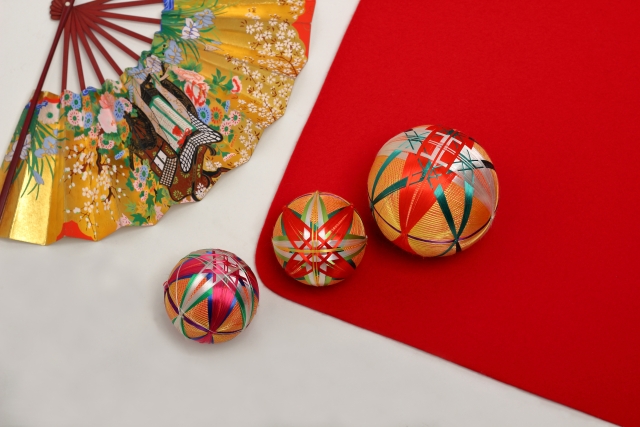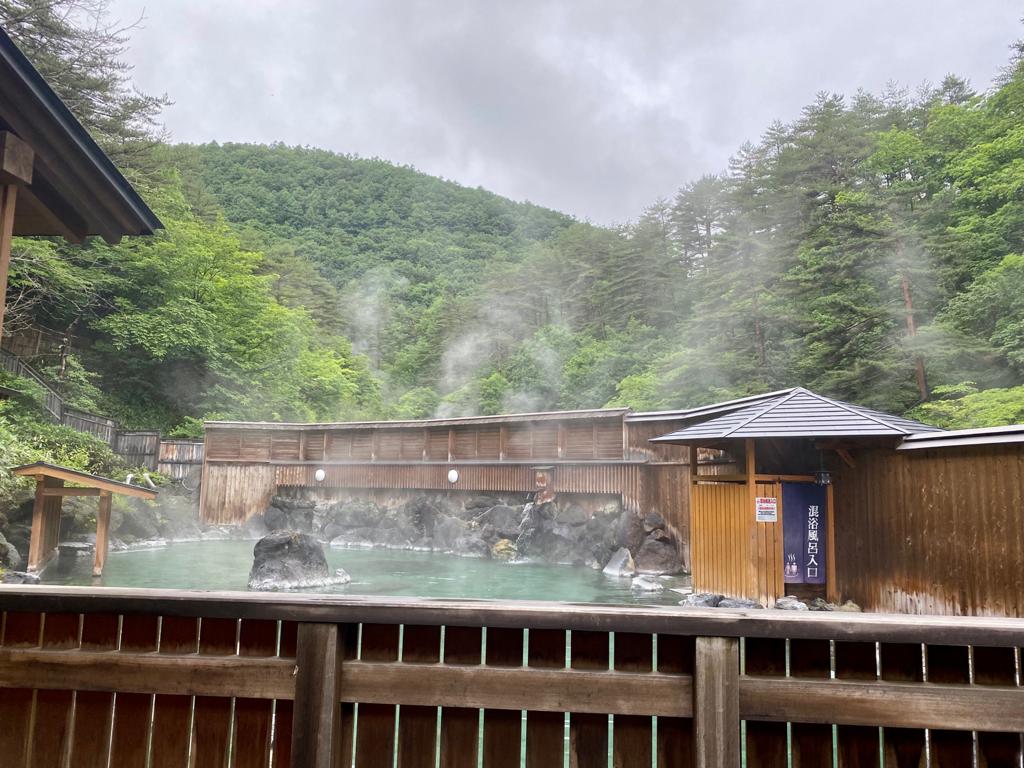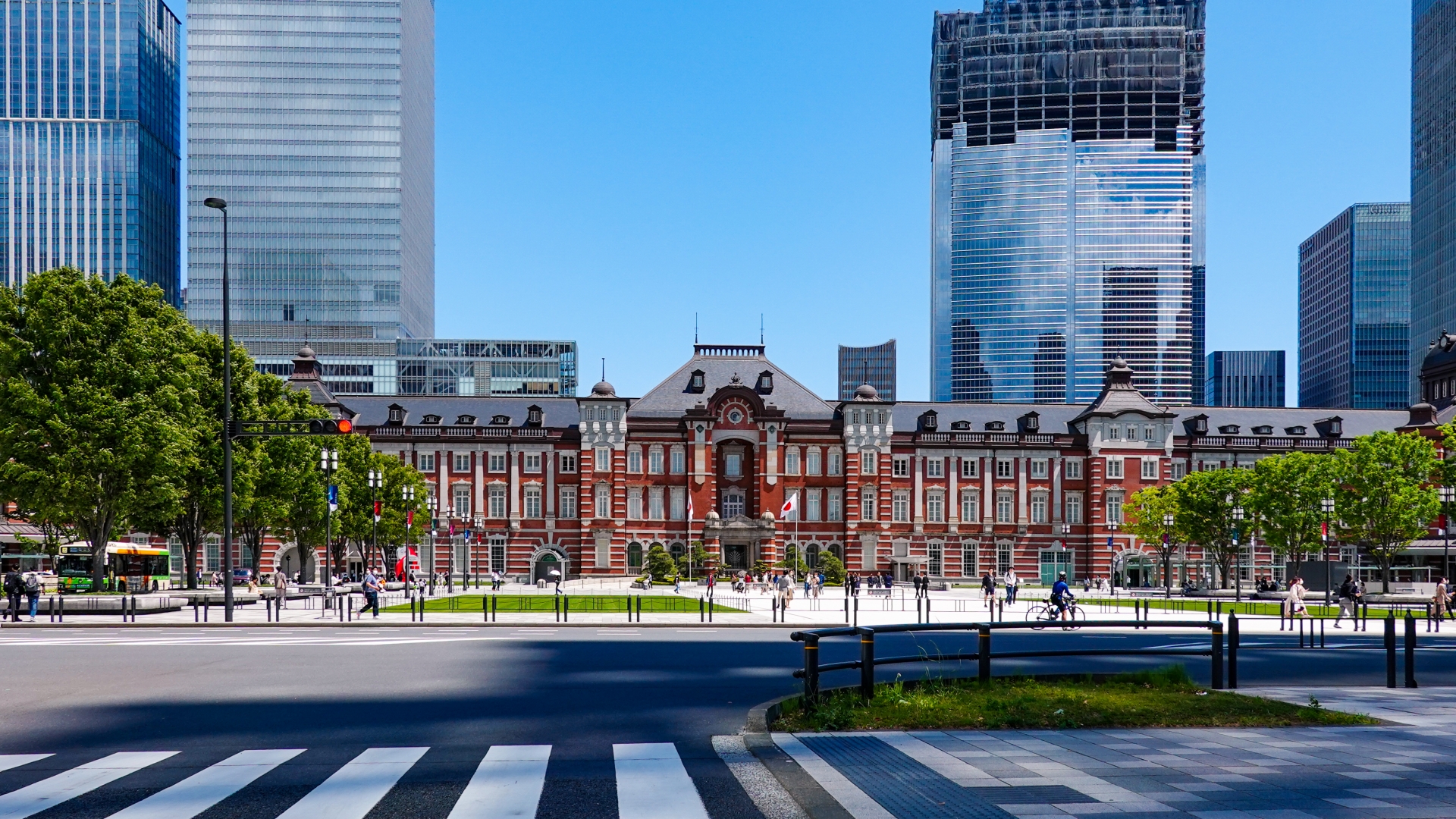
Mao Goto is a Japanese freelancer who was born in Hayama, Kanagawa prefecture, and raised in Tokyo. Since 2016 she lives in the Taito Ward, home to a lot of Japanese culture hotspots such as Asakusa, Akihabara, and Ueno. She has been interested in the field of English education of Japan and got her Master’s degree in March, 2020. A lover of photography, travel, sweets, and cross-stitch. Contact her via Facebook.
This post may contain some affiliate links. When you click through and make a purchase we may receive some commission, at no extra costs to you
In Japan, there are many artisans who are active in various fields ranging from food, architecture, and services. However, we should not forget about the traditional craftsmen who create the ultimate products. Their works that are created through a long history and passed down from generation to generation are truly worthy of being called “art”. This article introduces you to a range of traditional crafts, from those that are easy to buy to those that are more exclusive.
▼Check out high-quality Japanese products online.
Experience the best of Japan with our high-quality products that reflect Japanese lifestyle and culture, traditional designs, and materials from Japan’s natural environment. Don’t miss out on the opportunity to shop from anywhere in the world.
1. Edo Kiriko
Edo Kiriko is one of the most famous traditional crafts in Tokyo. It is a glass craft made by engraving beautiful patterns on colorful glasses such as a red and blue one pictures below. Edo Kiriko was born in Edo (now Tokyo) in 1834, by glasswork artisans who began carving glass using sand called “Kongo Sand (金剛砂)”. At the beginning of the Meiji Period, a glass craftsman from England, Emanuel Houptman, taught more than around 10 Japanese craftsmen the technique of glass carving. This became the basis of the present Edo Kiriko technique. Today, Edo Kiriko is recognized as one of Japan’s traditional crafts. The works created by Edo Kiriko craftsmen using these glass carving techniques are so beautiful that they catch many people’s eyes.

2. Nambu Tekki
This craft, with its black castings and numerous dots, is Nambu Tekki (南部鉄器), aka Nambu ironware. There are many different patterns of Nambu ironware, but the most famous one is “tetsubin (鉄瓶)”, an iron kettle. This traditional handicraft originated in Iwate Prefecture and is said to have been made since around the 17th century. One of the notable characteristics of a Nambu iron kettle is, when you fill it with water, boil and drink it, surprisingly, you do not taste or smell the iron. Therefore, you can make your tea more delicious with this iron kettle. It is also very durable and lasts for a long time providing you take good care of it. Often this masterpiece will become a family heirloom to be handed down the generations.
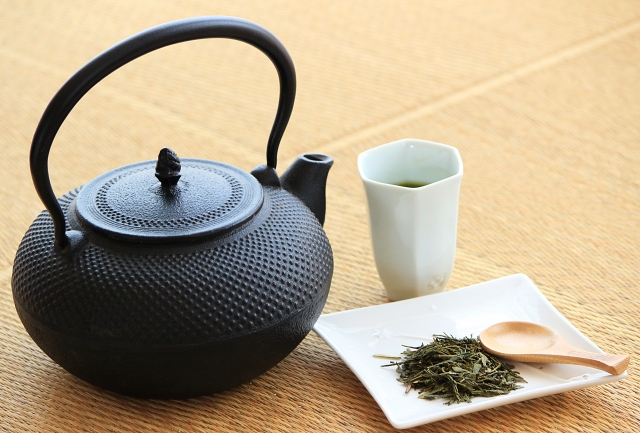
The ironware comes with a price tag with prices ranging between about ¥10,000 up to ¥50,000. Nowadays, in addition to a black one, red and blue Nambu ironware are also available, and a number of Nambu ironware is exported to the world. Brewing tea in this beautiful black iron kettle will make your tea time more wonderful. Nambu Tekki ironware is originally from Morioka in Iwate, but is sold all over the country. In specialty home stores you will find a selection as well as in several stores in Tokyo’s Kappabashi Kitchen Street.
3. Arita-yaki
Pottery and ceramic arts, are one of Japan’s oldest and most valued Japanese crafts and art forms. Arita-yaki (有田焼) is the traditional ceramic ware produced in Arita and the surrounding area in Saga Prefecture. It is a craft with over 400 years of history. When Toyotomi Hideyoshi (豊臣 秀吉) sent his troops to Korea during the Sengoku Period, Lee Sam-pyeong (李参平), one of the Korean potters, who accompanied the lord of Hizen Province (肥前国, present-day Saga and Nagasaki Prefecture) from Korea, started making pottery by using pottery stones found in Arita. This is said to be the origin of Arita-yaki. White porcelain with beautiful designs in red, blue and gold colors is a traditional craft that makes you feel the beauty of Asia.
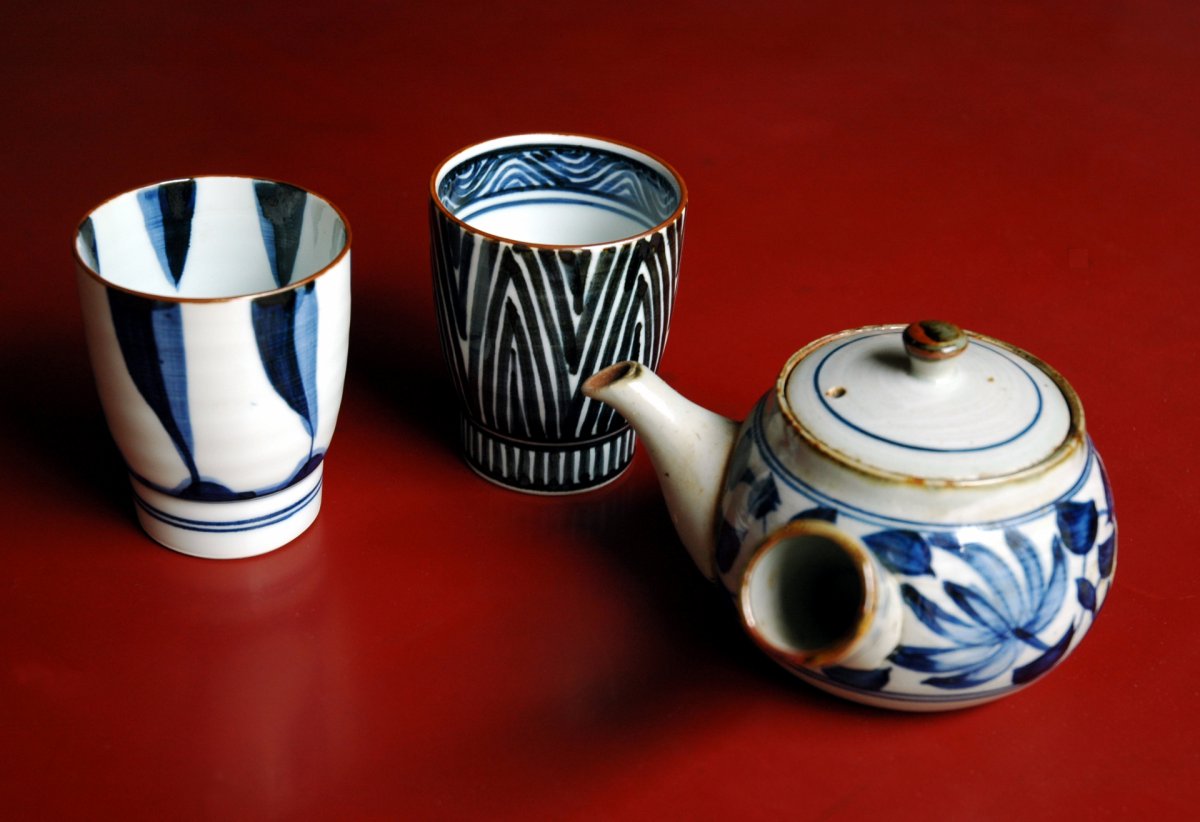
There are many villages/ areas in Japan that are well-known for their beautiful pottery. Japanese pottery has a long history and each area has its own unique style. You can do pottery classes at most of the famous pottery regions, but also cities like Tokyo and Kyoto offer pottery workshops. Make your own bowls and plates and bring home unique souvenirs from Japan!
▶ Pottery class Tokyo
▶ Pottery experience with spinning wheel in Aomori
4. Hakone Yosegi Zaiku
Hakone Yosegi Zaiku (箱根寄木細工), translates as Hakone wood mosaic work and is a wooden craft that originated in Hakone, Kanagawa Prefecture about 130 years ago. It is a craft made of various types of wood with different grains and colors. Patterns are created by joining wood together, creating unique boxes. The produce as well as the wood used is diverse, including a camphor tree, yew tree, sakura tree, lacquer tree and etc. Nowadays, there are many kinds of Hakone Yosegi Zaiku products such as letter boxes, drawers, jewelry boxes, coasters, etc. Among the wide range of products, a famous one is a secret box (秘密箱). A secret box, also known as a karakuri-box (からくり箱), is a box with tricks that can only be opened by manipulating them in the correct order. They range from simple ones with only four tricks to difficult ones with more than 100 tricks. If you like solving puzzles, why don’t you buy one and give it a try?
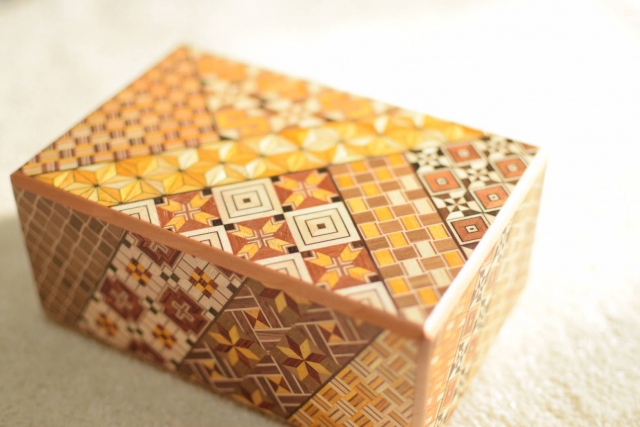
5. Wajima-nuri
The lacquerware born in Wajima City, Ishikawa Prefecture, is Wajima-nuri (輪島塗). Unfortunately, the exact origin is unknown, however, it is clear from documents that there was a Wajima-nuri craftsman in 1476. The bright red and jet-black lacquerware with gold decorations is truly gorgeous. A variety of Wajima-nuri lacquerware is sold, including soup bowls, chopsticks, Jubako (重箱, Jubako boxes), hand mirrors, and tea utensils. There are many steps involved in the making Wajima-nuri, more than 120 if you include the more detailed processes. Whereas for other crafts only one craftsman is often in charge of all the processes, Wajima-nuri are usually made by a team of skilled workers. The beautiful Wajima-nuri lacquerware produced through so many processes is a gem of a craft, created by the outstanding efforts of Wajima-nuri craftsmen.
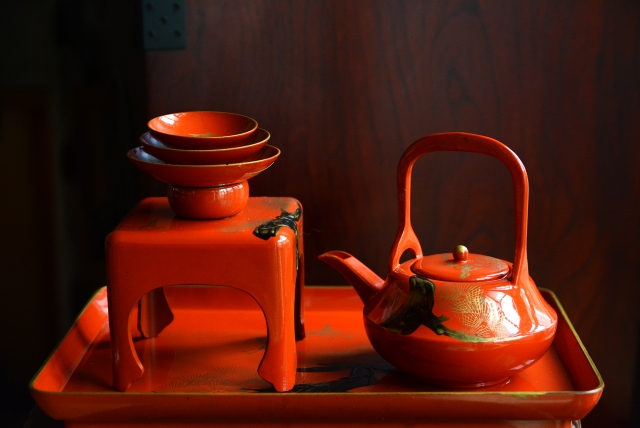
6. Kamakura-bori
Kamakura is a town of historic shrines and temples that can be easily reached from Tokyo. Kamakura-bori (鎌倉彫) is a traditional craft nurtured in this area. This type of lacquer is made by carefully carving patterns in wood and lacquering it with layers of color. Beautiful patterns are drawn on it before it is then lacquered many times as the final section. From everyday items such as trays and chopsticks to accessories such as ornamental hairpins, pins, and pendants are now produced and sold. Luster of lacquer and beautiful patterns of Kamakura-bori products will enrich your daily life.
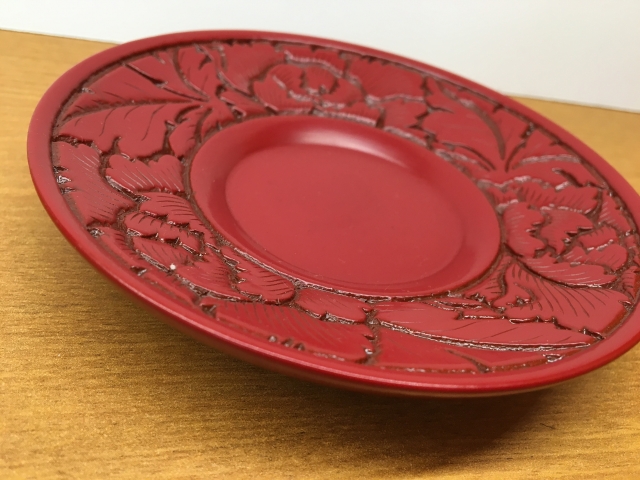
7. Hakata-ori
Hakata-ori (博多織) is a silk fabric produced in Hakata, the center of Fukuoka Prefecture, and has a history of over 800 years. Dating back to 1235, 満田彌三右衛門 (Mitsuta Yazaemon) went to Song Dynasty (present-day China) and acquired weaving techniques, and brought those techniques back to Japan in 1241. That is said to be the roots of Hakata-ori. Hakata-ori fabric is woven with silk, gold and silver threads. Very strong and thick, therefore, it’s pretty suitable for kimono belts. Nowadays, ties, bags and pen cases, and other goods made of Hakata-ori fabric are produced and recommended as a suitable souvenir of Hakata.
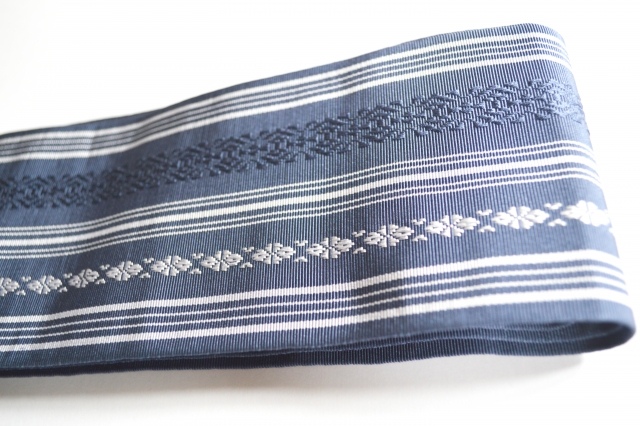
8. Furin
Furin are Japanese wind chimes that bring the Japanese people a sense of relief during the scorching summer heat. The relaxing, tingling sound that the wind chimes make is supposed to make you feel less warm as just thinking about a light breeze will cool you down. This Japanese summer symbol can be bought in many shop including souvenir shops like the Shinohara Furin Main Shop in Tokyo, and if you are feeling creative you can even make your own during a workshop too!
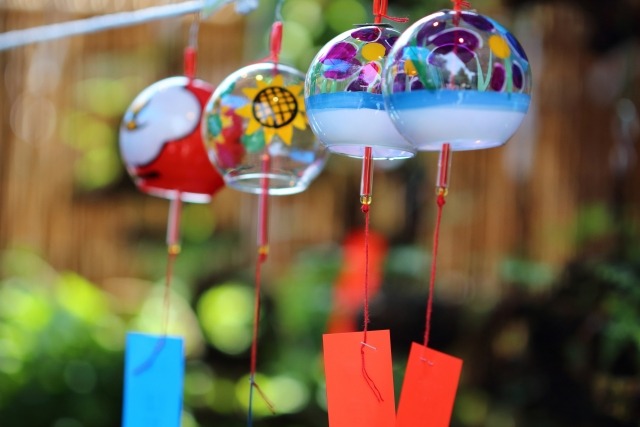
9. Daruma
A popular souvenir from Japan is the daruma, lucky charms that are commonly believed to make your wish come true. The story of the daruma states that a long time ago, a Buddhist monk was engaging in meditation for a lengthy period of time. His perseverance for enlightenment was so firmly committed and, after almost a decade, his arms, and legs, simply fell off. A creepy story for a lucky charm.
They are generally red and the eyebrows are made to look like cranes and the mustache or cheek hair made to look like turtle or tortoise shells, because cranes and tortoises represent longevity. But there are different designs at local shops, for example at Tsukuji Fish Market the daruma eyebrows are made to look like fish. Daruma can come in all sizes, are handmade from washi paper and have no eyes painted on them. The idea is to draw the left eye on the daruma while imagining your dream and once your dream comes true you paint the right eye and give the daruma its sight back. You can buy daruma at almost every tourist shop, but also at malls like Tokyu Hands and markets.
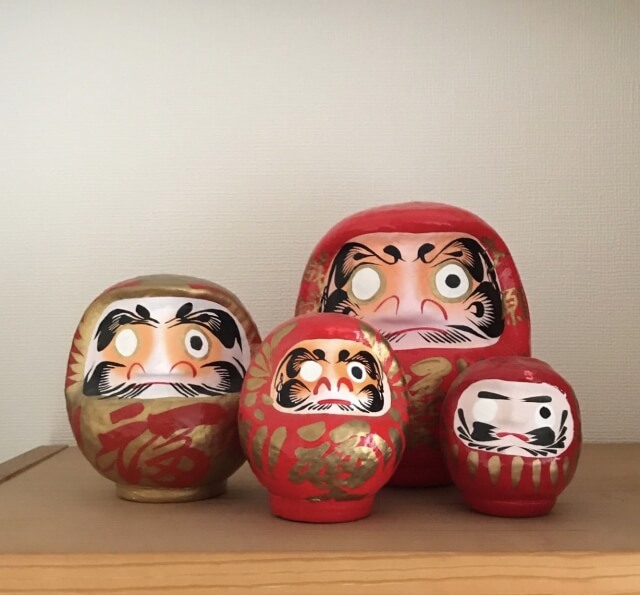
10. Bonsai
Maybe not the first item that comes to mind when thinking about Japanese crafts, but Bonsai are definitely a Japanese form of art and taking care of a Bonsai can be seen as a traditional craft. The trees are basically miniature potted trees and plants and grown in such a way that to look beautiful and elegant. Bonsai is an ancient form of art with a long history and a long set of requirements with regards to its maintenance and looks. Bonsai trees come in different sizes, shapes and prices. Unfortunately taking a Bonsai tree home as a souvenir is a time-consuming and pricy process and in many countries, there are strict measures governing the import of bonsai, such as the requirement for import permits, plant quarantine and growing site inspections.
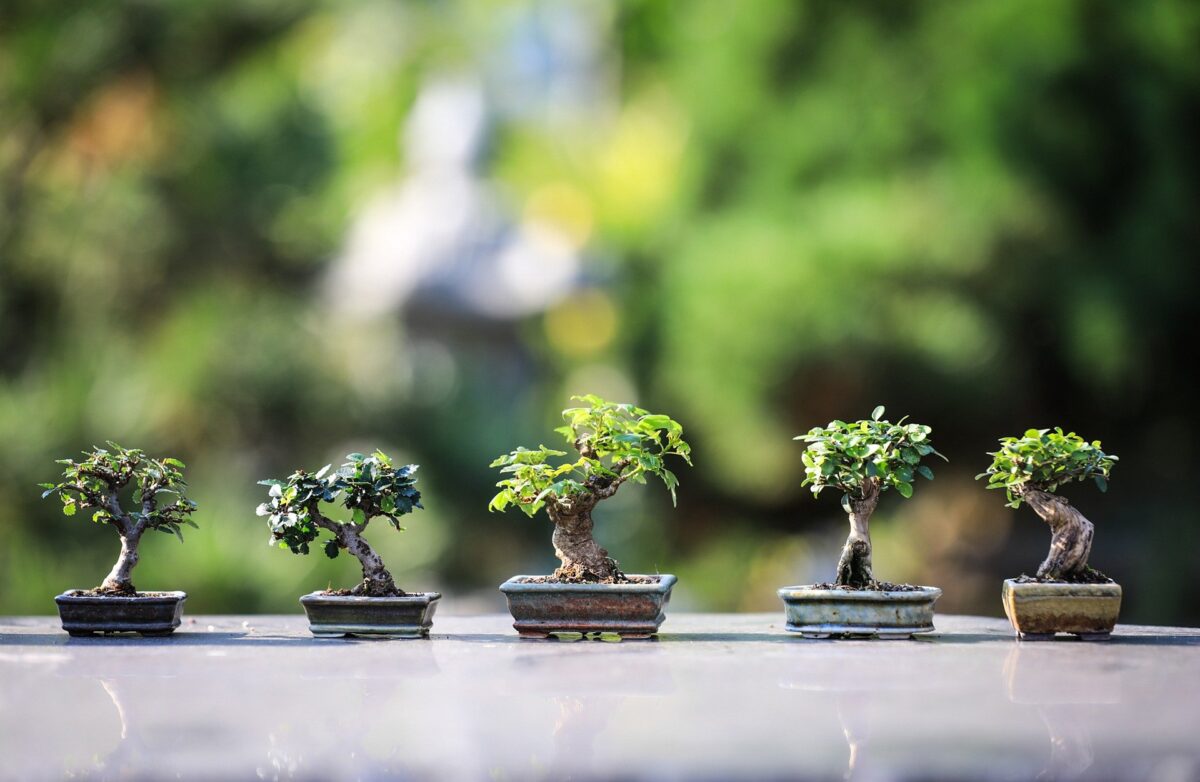
There are many wonderful traditional crafts in Japan, some more beautiful than others and this list doesn’t even come close to cover all. Just think about Japanese sake, origami, haiku’s, Japanese knives, kokeshi dolls, washi paper, kimono making, folding fans (sensu), Japanese umbrella (wagasa) and old fashioned anime. These are just some examples of world-famous Japanese crafts for you to enjoy / try when you are in Japan.
What these crafts all have in in common is that it is becoming increasingly difficult for Japanese traditional handicraft artisans to find their successors. Often the craftsmanship is passed down through the generations, but these days the younger generation doesn’t always take an interest in the family business. To change their business model, some places selling traditional crafts started offering experiences to try your own hand at making this craft, so make sure to check out their official websites if you are interested. If you visit Japan, why don’t you visit some of the workshops where these beautiful art works are created by traditional craftsmen? They make for a great souvenir and will be one of your many wonderful memories of Japan.
11. Temari
Temari is a traditional Japanese folk art form that involves creating decorative balls using a variety of embroidery techniques. The word “temari” literally means “hand ball” in Japanese, and the art form is said to have originated in China before spreading to Japan in the 7th century. To make a temari ball, first a ball shaped base is created from a core of tightly-wrapped thread or fabric. Then, a series of colorful thread designs are embroidered onto the ball, creating intricate geometric patterns and designs.
In addition to their decorative value, temari balls have been used historically as toys for children, as well as for ceremonial and decorative purposes. Today, temari balls are often displayed as works of art, and the tradition of creating them continues to be passed down from generation to generation in Japan.
Purchase your own beautiful Japanese crafts here!
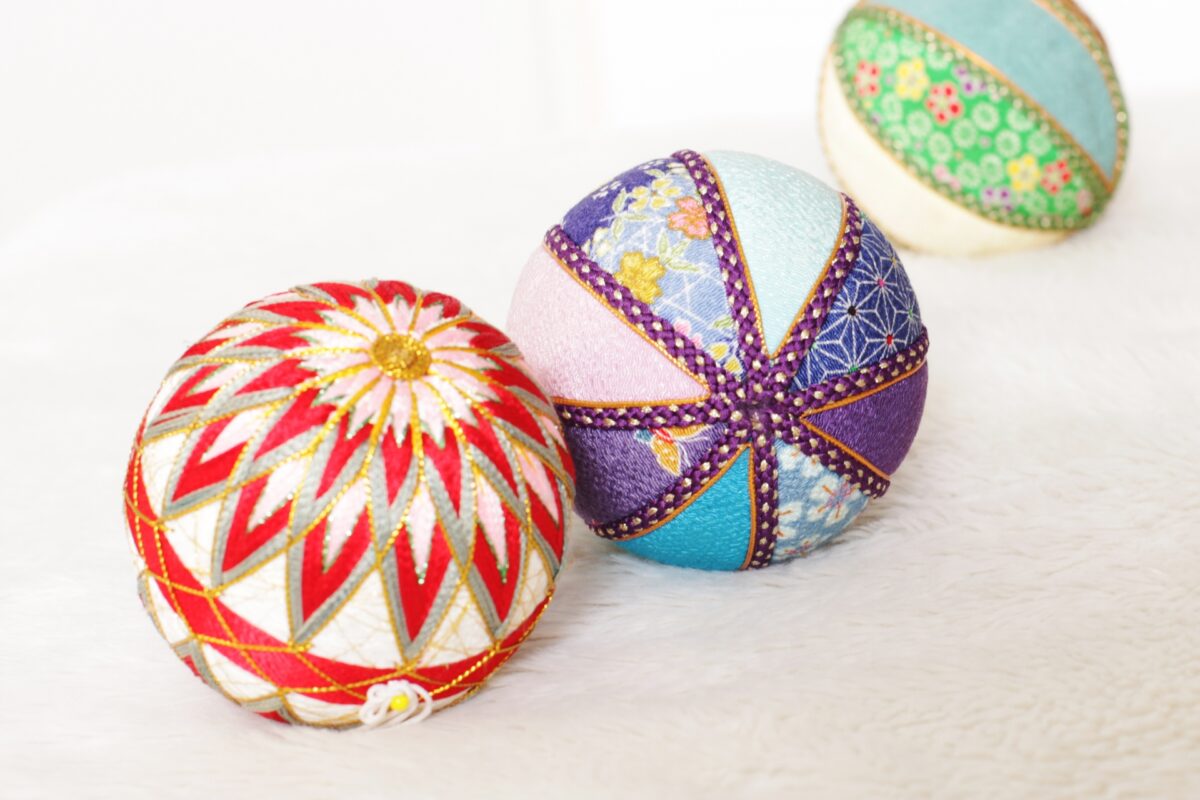
Follow us on Instagram, Facebook and Twitter for more travel inspiration. Or tag us to get featured!
Happy travelling!
